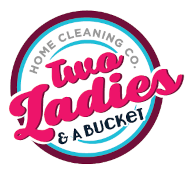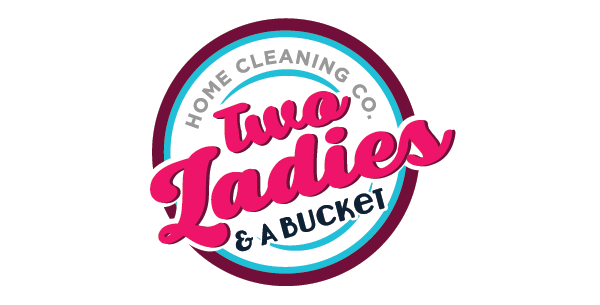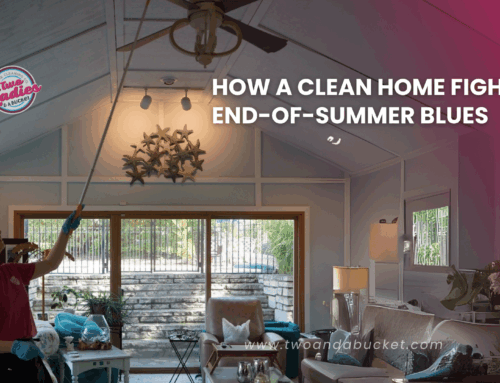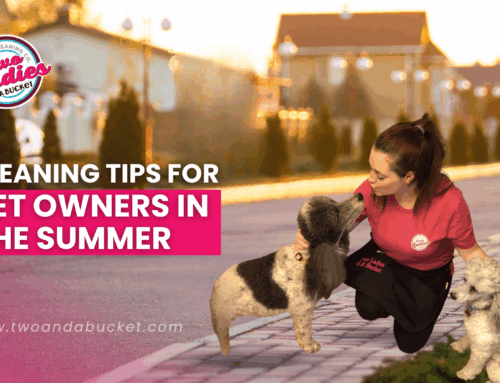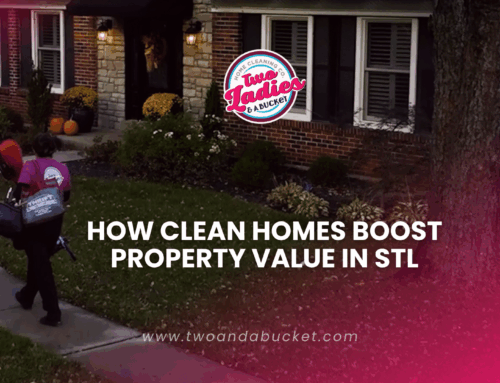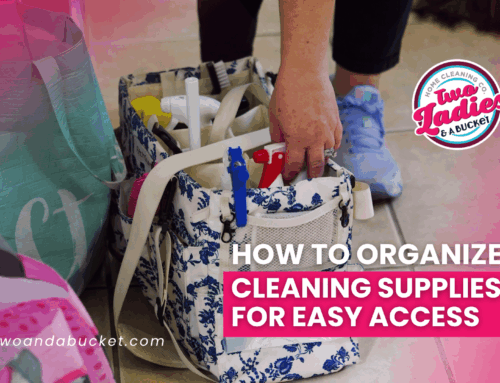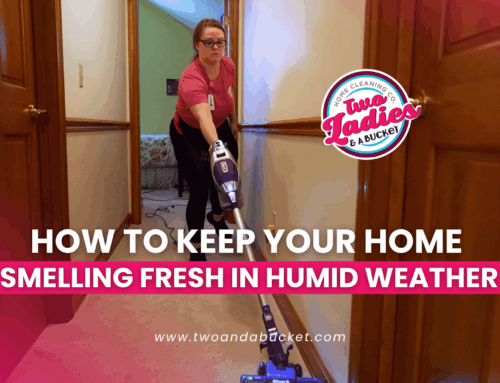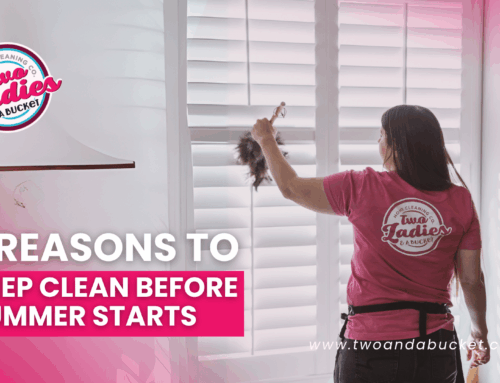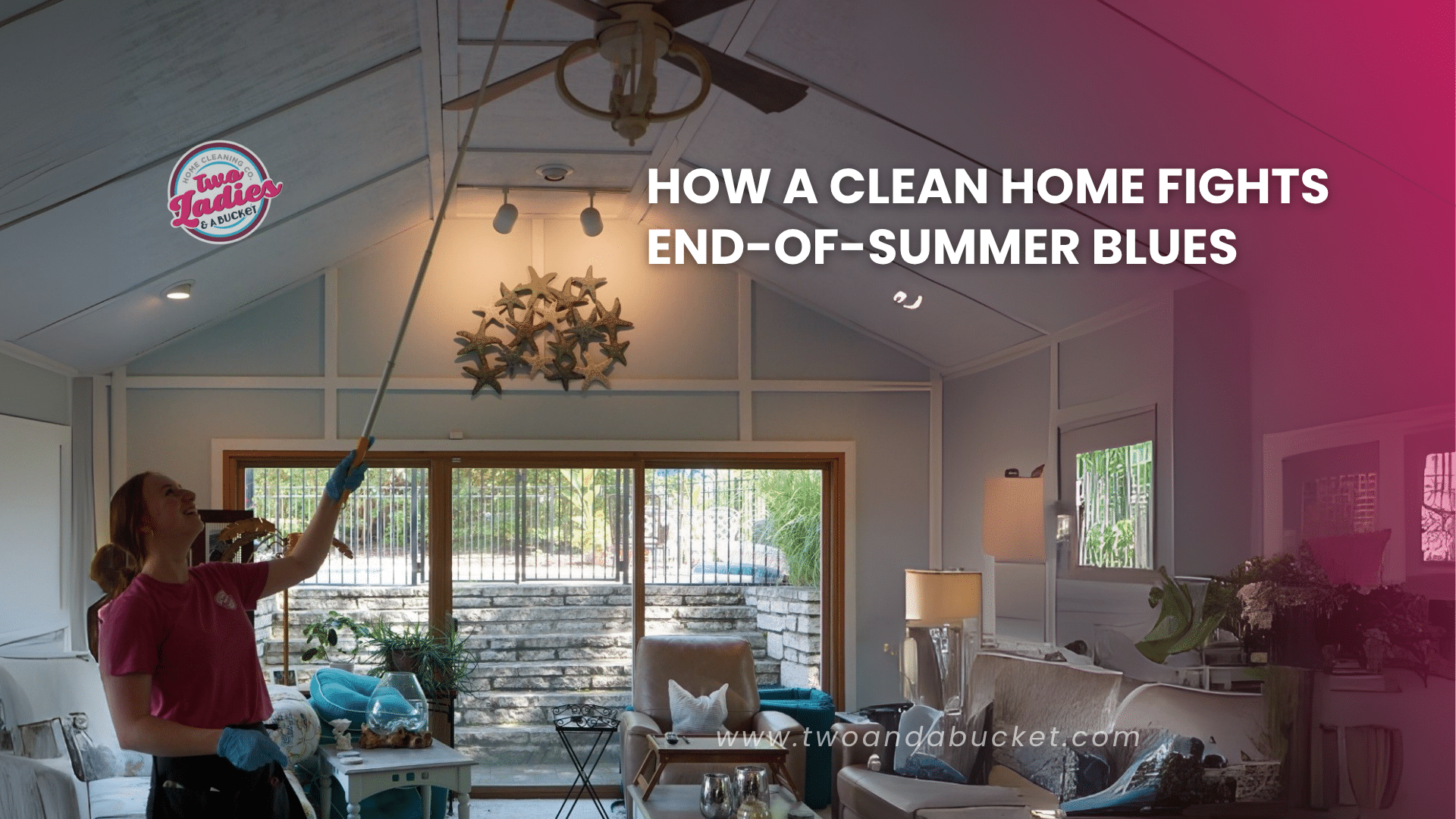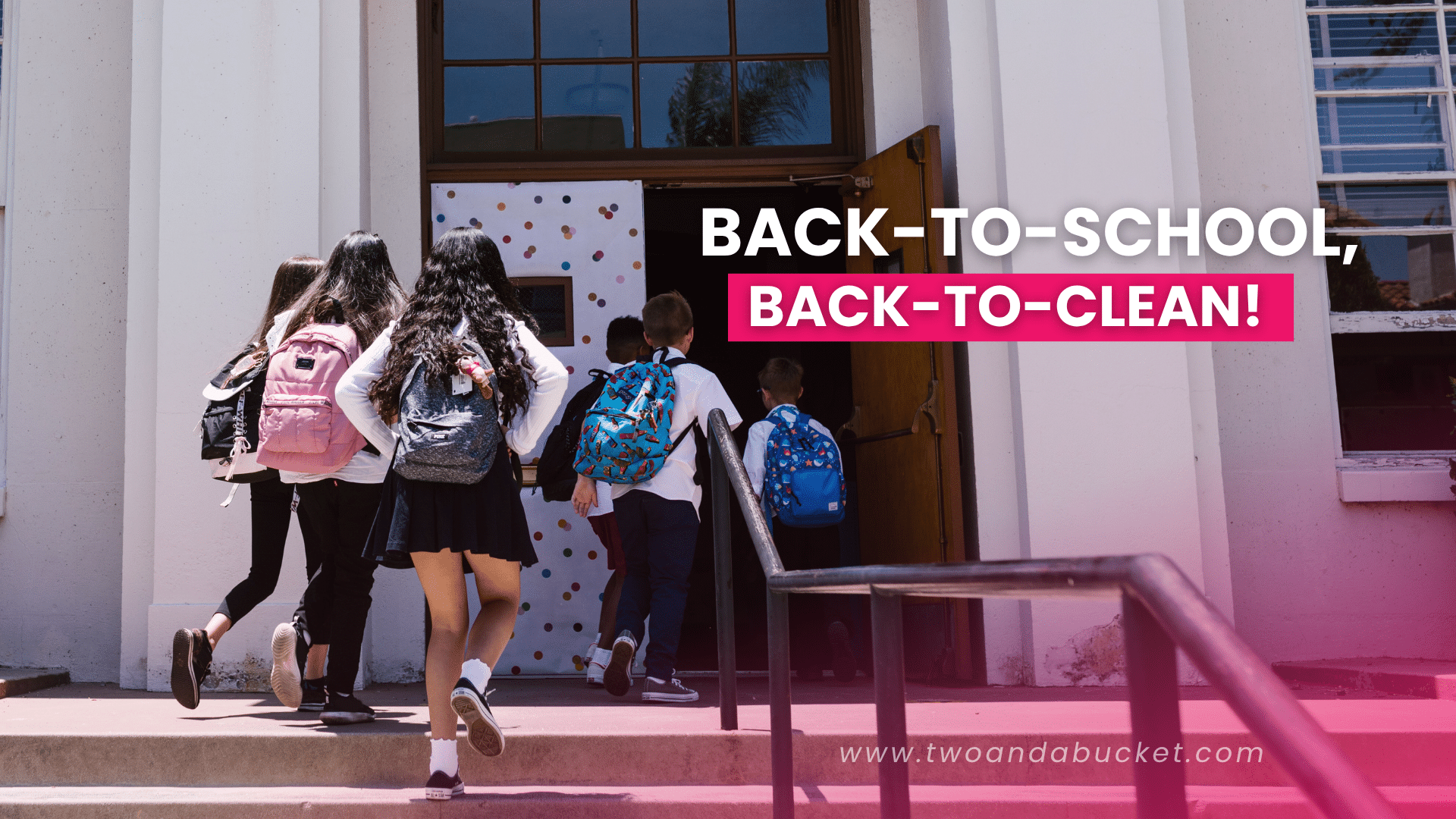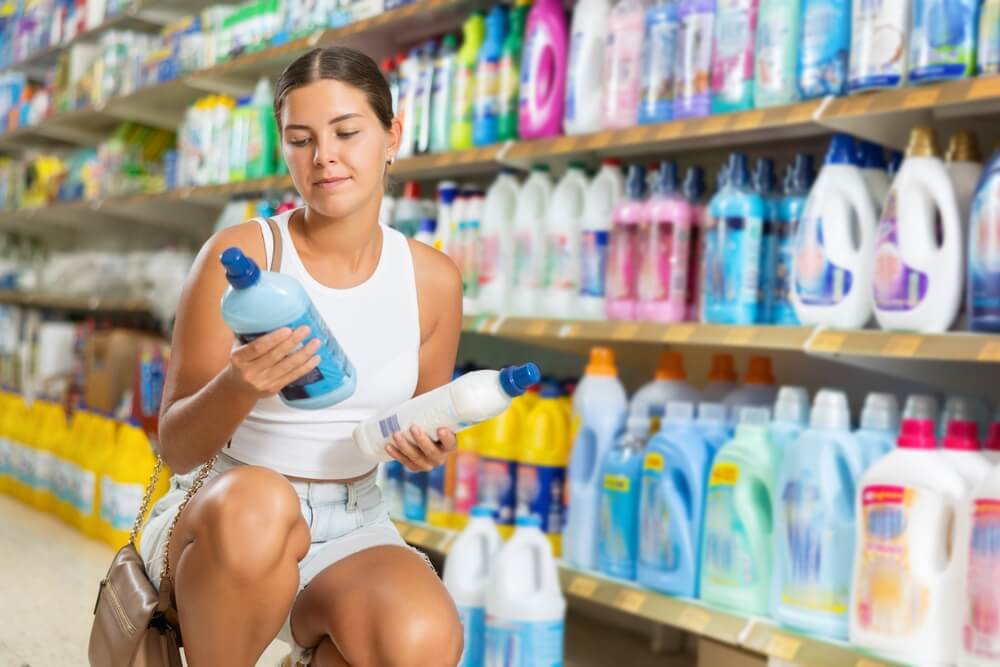
What Household Cleaning Products Should NOT Be Mixed
- Never mix bleach with ammonia, vinegar, or rubbing alcohol—these create chloramine, chlorine, or chloroform gases that harm lungs.
- Always read labels, rinse surfaces between products, ventilate well, and use one cleaner at a time to avoid dangerous reactions.
- If exposed, leave the area, ventilate, call Poison Control (1-800-222-1222), and seek emergency help for severe symptoms.
Introduction: Safety First in Every St. Louis Home
Let’s face it—cleaning is a part of life, especially here in St. Louis where the seasons bring everything from pollen to mud into our homes. Whether you’re prepping your home for guests, doing a deep spring clean, or just trying to keep things fresh every week, you’ve probably reached for more than one cleaning product at a time. But before you play mad scientist with your cleaning caddy, let’s talk safety.
At Two Ladies & A Bucket, we’ve seen the aftermath of good intentions gone wrong. And the truth is, mixing cleaning products can be far more dangerous than most people realize. We’re not just talking about ineffective cleaning—we’re talking about chemical reactions that can lead to respiratory distress, burns, and even trips to the emergency room.
This blog is your go-to guide to what household cleaners should never be combined. And trust us, once you know the risks, you’ll never look at your bleach bottle the same way again. So before you scrub another countertop or pour a cleaner down the drain, read on. Your lungs—and your loved ones—will thank you.
Why Mixing Cleaning Products Can Be Dangerous
It seems innocent, right? A little of this cleaner, a splash of that one—maybe it’ll double the power and cut the cleaning time in half. Nope. In reality, mixing the wrong products can turn your everyday household into a toxic minefield.
When you mix certain chemicals together, they don’t just coexist. They react. And not in a fun, bubbly, science-fair way. We’re talking about reactions that release poisonous gases, cause corrosive spills, or render your cleaning efforts totally useless.
Let’s break it down:
-
Toxic Gases: Combining bleach with either ammonia or vinegar releases chlorine-based gases that are highly harmful to your lungs.
-
Chemical Burns: Certain combinations can create acidic or alkaline compounds that damage your skin and mucous membranes.
-
Unpredictable Reactions: Some cleaning product labels don’t list all ingredients, so even if you think you’re safe, you could end up creating a harmful cocktail.
-
Ineffectiveness: In the best-case scenario, the mixture neutralizes the active ingredients, making the product completely ineffective.
Short-term effects from exposure can include coughing, nausea, burning eyes, and dizziness. Long-term exposure, especially in poorly ventilated areas, can result in chronic respiratory issues, skin problems, and damage to the nervous system.
It’s not just about reading the back of the bottle—it’s about understanding how everyday ingredients interact, especially the common culprits like bleach, ammonia, vinegar, and alcohol-based cleaners.
And here’s the kicker—many of these dangerous mixes happen during regular routines like cleaning bathrooms, disinfecting kitchens, or unclogging drains. You might not realize what you’re doing until it’s too late.
Bleach + Ammonia = Toxic Chloramine Vapors
This is perhaps the most infamous duo in the world of dangerous cleaning combos—and for good reason.
When sodium hypochlorite (bleach) meets ammonia, they react to form chloramine gases, a toxic cloud that can cause serious respiratory problems, eye irritation, and even chemical burns. If there’s enough ammonia, it can even lead to the formation of hydrazine—a substance so toxic it’s used in rocket fuel.
Symptoms of exposure include:
-
Coughing
-
Shortness of breath
-
Chest pain
-
Watery eyes
-
Nausea
-
Throat irritation
In high concentrations or enclosed spaces like a bathroom or laundry room, exposure can be life-threatening.
Common sources of ammonia:
-
Glass cleaners
-
Multi-surface sprays
-
Urine (especially in pet stains)
-
Oven cleaners
Many people unknowingly mix bleach and ammonia when cleaning a cat litter box or treating pet accidents with bleach on carpet. Big mistake.
A safer solution?
Stick to one cleaner at a time, and rinse surfaces thoroughly before switching products. Better yet, leave it to a professional service like ours at Two Ladies & A Bucket, where safety is our first priority.
Bleach + Vinegar = Toxic Chlorine Gas
You’ve probably heard that vinegar is a miracle cleaner—it deodorizes, cuts grease, and it’s natural! So what could go wrong by adding it to bleach to “supercharge” its power?
A lot, actually.
When bleach (a base) combines with vinegar (an acid), it releases chlorine gas, a toxic substance that was used as a weapon in World War I. Yes, you read that right. This gas attacks the mucous membranes—your eyes, nose, throat, and lungs—leading to:
-
Burning sensations
-
Coughing fits
-
Breathing difficulty
-
Chest tightness
Even brief exposure in an unventilated room can cause significant harm, especially for children, the elderly, or anyone with asthma or other respiratory issues.
What makes this mix so common is that people often clean kitchens or bathrooms with vinegar to cut through grime, and then follow up with bleach to disinfect. That’s a mistake.
Instead of doubling down on your cleaners, try using one at a time:
-
Use vinegar for its degreasing power
-
Rinse thoroughly
-
Then apply bleach if necessary
Never mix them in the same bottle or even the same space within minutes of each other.
Bleach + Rubbing Alcohol = Chloroform
If you’ve ever tried to sanitize your bathroom by adding rubbing alcohol after using bleach, you’re not alone—but you could be setting yourself up for a major health hazard. Mixing bleach (sodium hypochlorite) with rubbing alcohol (isopropyl alcohol) produces a deadly combination: chloroform and hydrochloric acid.
What is chloroform?
Chloroform is a powerful anesthetic—so powerful, in fact, that it was once used to knock people unconscious in old spy movies. It can cause dizziness, headaches, nausea, and in high enough concentrations, it can make you pass out or suffer organ damage.
Even worse, chloroform is a potential carcinogen. Long-term exposure may lead to liver, kidney, or central nervous system damage. This mix becomes especially dangerous in small, poorly ventilated spaces like a bathroom or kitchen.
Common mistake scenarios:
-
Spraying a bleach-based cleaner on a countertop
-
Following up with rubbing alcohol to “disinfect” further
-
Wiping both without rinsing in between
This is another example of why more is not always better. Bleach is already a potent disinfectant. Rubbing alcohol is great on its own. But together? That’s a hard no.
If you feel dizzy, light-headed, or nauseous while cleaning, get fresh air immediately and call poison control if symptoms persist. Better yet, let the pros at Two Ladies & A Bucket handle your disinfecting needs the safe way.
Hydrogen Peroxide + Vinegar = Peracetic Acid
Hydrogen peroxide and vinegar both get a lot of love from DIY cleaning blogs—and on their own, they’re pretty effective and non-toxic. But mix them together, and you’ve got a problem: peracetic acid.
This acid is highly corrosive and can cause skin, eye, and respiratory irritation. It’s not just about the burn—it’s also unstable, especially when stored in a container. So while you might not see a visible reaction like fizzing or bubbling, make no mistake: it’s dangerous.
Where people mix them by accident:
-
Spraying vinegar on a surface
-
Following up with hydrogen peroxide for “extra power”
-
Creating a pre-mixed bottle with both (never do this!)
What to do instead:
Use hydrogen peroxide and vinegar separately, with a buffer of time and rinsing between applications. A great technique some professionals use is:
-
Spray vinegar, let it sit, wipe.
-
Then apply hydrogen peroxide (never mix or store together!).
This method is actually used in some food-safe environments, but only with proper training and ventilation. For your home? It’s best to leave this combo to trained professionals like us at Two Ladies & A Bucket who understand how to clean and disinfect without endangering your family.
Drain Cleaner + Another Drain Cleaner = Boom
St. Louis homeowners, we get it. A clogged drain is frustrating. And when one cleaner doesn’t work, your instinct might be to grab another—maybe even a different brand or formula—and pour it down on top of the first.
Stop right there.
Mixing different drain cleaners—especially those containing acidic and alkaline components—can cause violent chemical reactions. Some even result in explosions or toxic gas release, depending on the active ingredients involved.
What can happen:
-
Pipes melt or crack due to extreme heat
-
Fumes cause severe eye and lung irritation
-
Geysers of dangerous chemicals shoot back up the drain
Drain cleaners are already some of the most caustic and dangerous products under your sink. Doubling down doesn’t make them work faster—it just increases the risk.
What to do instead:
-
Use boiling water and a plunger first
-
Try an enzyme-based drain cleaner that’s safer and natural
-
If the clog remains, call a licensed plumber
Or save yourself the headache and mess by calling Two Ladies & A Bucket. We’ll get your sink sparkling—without the explosions.
Baking Soda + Vinegar = Ineffective, Not Dangerous
Let’s be clear: mixing baking soda (a base) with vinegar (an acid) isn’t dangerous—but it’s not nearly as effective as TikTok might make you believe.
When these two are combined, they undergo a chemical reaction that neutralizes each other. This produces carbon dioxide gas (that fizzy reaction you see), but after that? You’re mostly left with water and a little bit of salt.
So why is it popular?
It’s flashy. It fizzes. It looks like it’s working. But the reality is:
-
The fizz is short-lived
-
The neutralization cancels out the cleaning power of both ingredients
-
It doesn’t cut through grime or disinfect nearly as well as each on their own
Better approach?
Use them separately, depending on the job:
-
Vinegar for cutting through grease and killing some germs
-
Baking soda for scrubbing and deodorizing
They each shine in their own way—just not together.
So while your kids might enjoy watching your volcano-style reaction in the kitchen sink, your surfaces won’t be any cleaner afterward. For truly effective, science-backed cleaning, trust the team at Two Ladies & A Bucket.
Disinfectants + Detergents = Reduced Effectiveness
Ever grab a bottle of disinfectant spray and spritz it over a soapy surface? Or vice versa? While this combo won’t release toxic fumes, it will sabotage your cleaning efforts.
Disinfectants like quaternary ammonium compounds (quats) and chlorine-based solutions are designed to kill bacteria and viruses. Detergents, on the other hand, are designed to remove dirt, oils, and grime.
But when you mix the two together—especially without rinsing in between—you can create a problem:
-
The soap neutralizes the disinfectant
-
The disinfectant becomes less effective at killing pathogens
-
You get a surface that’s neither fully clean nor disinfected
Common mistake zones:
-
Kitchen counters
-
Bathroom sinks
-
High-touch areas like doorknobs and remotes
How to do it right:
-
Clean the surface with soap or detergent first to remove debris.
-
Rinse thoroughly with water.
-
Dry the area.
-
Apply disinfectant and let it air-dry—don’t wipe it off immediately.
Cleaning and disinfecting are two different steps, and doing them in the wrong order—or mixing products—can lead to false confidence in cleanliness. For reliable, proven sanitizing routines, the Two Ladies & A Bucket team has you covered in every St. Louis neighborhood.
Natural Cleaners Are Not Always Safe to Mix
There’s a common misconception floating around the internet: if it’s labeled “natural” or “organic,” then it must be safe to mix. But just because something comes from nature doesn’t mean it won’t react dangerously when combined. In fact, many so-called natural cleaning agents can still create harmful chemical reactions when used improperly.
Let’s look at some common natural cleaners:
-
Lemon juice (acidic)
-
Essential oils (highly concentrated plant compounds)
-
Baking soda
-
Vinegar
-
Castile soap
Alone, these ingredients are relatively safe. But mix the wrong ones together and you may end up:
-
Neutralizing their cleaning power
-
Creating sticky residues
-
Irritating your skin, eyes, or airways
-
Damaging sensitive surfaces like granite, marble, or hardwood
For example, mixing vinegar (an acid) with castile soap (a base) leads to curdling and leaves behind a greasy mess. It’s not harmful, but it renders your cleaning effort completely useless. Similarly, combining certain essential oils with vinegar or peroxide can cause skin irritation or degrade plastic spray bottles due to their strength.
Don’t fall for DIY myths.
Pinterest and YouTube are full of “life hack” recipes for miracle cleaners, but these recipes often skip over safety concerns. Always research before mixing—even natural stuff.
If you love the idea of green cleaning but aren’t sure where to start, let Two Ladies & A Bucket handle it. We use eco-friendly products that are pre-tested for both safety and effectiveness—no risky experiments required.
Label Reading 101: Know What You’re Using
It may sound boring, but reading labels could literally save your life—or at least your lungs. Every cleaner under your sink has specific usage instructions, warnings, and ingredient lists for a reason. If you’ve ever glanced at a label and thought, “That’s just legal talk,” think again.
Label reading is the first step to safe cleaning.
What to look for:
-
Active ingredients: Know what chemicals you’re working with.
-
Warnings about mixing: Many products say “Do not mix with bleach” in big letters—don’t ignore it.
-
Ventilation requirements: Some products release fumes even when used alone.
-
Usage instructions: Diluting incorrectly can make some products more dangerous or less effective.
-
Storage advice: Certain products degrade when exposed to heat or light, which can change their chemical makeup over time.
For example, many glass cleaners contain ammonia, even if it’s not obvious on the front label. That’s crucial information if you also use bleach in your routine.
Tips for better safety:
-
Always read labels before use—even if you’ve used the product before.
-
Don’t rely on memory; formulations change.
-
Keep cleaning products in their original containers to avoid confusion.
-
Use a marker to highlight “Do Not Mix” warnings if you need a visual reminder.
And when in doubt? Call a professional. At Two Ladies & A Bucket, our cleaning staff is trained to read and understand product labels, so you don’t have to play chemical detective in your own home.
Safe Cleaning Habits to Practice at Home
Keeping a clean house shouldn’t come at the cost of your safety. Fortunately, there are some easy-to-follow habits that can help you avoid dangerous product combinations, accidental exposure, or ineffective cleaning routines.
Here are our top safety habits:
-
Stick to one cleaner at a time. Don’t layer or mix unless a product specifically states it’s safe.
-
Open windows when cleaning. Ventilation is crucial, especially when using bleach or any strong chemical.
-
Wear gloves and protective gear. This protects your skin from irritation and chemical burns.
-
Label all bottles. If you transfer cleaners into spray bottles, clearly label them with the contents.
-
Keep kids and pets out of cleaning zones. They’re more vulnerable to fumes and accidental exposure.
-
Store products securely. Always store in original containers with childproof caps if possible.
-
Rinse surfaces before switching cleaners. Especially if you’re moving between acidic and basic products.
-
Follow dwell times. Disinfectants need time to work. Wiping too soon makes them ineffective.
Even “safe” products can become risky when used carelessly. The more you treat cleaning like a science—because it is—the safer your household will be.
For busy homeowners in St. Louis, the best cleaning habit of all might just be delegation. Hire professionals like Two Ladies & A Bucket who follow these habits every day, ensuring both spotless surfaces and chemical safety.
What To Do If You Accidentally Mix the Wrong Cleaners
Accidents happen. Maybe you didn’t realize your glass cleaner had ammonia. Maybe you sprayed vinegar right after bleach in the shower. Whatever the case, if you’ve mixed the wrong cleaning products, the most important thing is to act fast and smart.
Immediate steps to take:
-
Stop using the products immediately.
-
Open windows and doors. Ventilation is key to dispersing any toxic fumes.
-
Leave the room. Get yourself and others (including pets) out of the affected area.
-
Don’t try to clean it up right away. Wait until the fumes have cleared.
-
If you feel symptoms like coughing, nausea, dizziness, or burning in the eyes or throat, call Poison Control at 1-800-222-1222.
-
If someone passes out or has trouble breathing, call 911 immediately.
What NOT to do:
-
Don’t add more products to “fix” the mix.
-
Don’t stick around to finish cleaning.
-
Don’t ignore mild symptoms—they can escalate quickly.
It’s scary, yes. But it’s also preventable. Stick to one product at a time, rinse surfaces, and never assume two good cleaners are better together. They’re not.
To avoid this stress altogether, consider scheduling routine cleanings with trained experts. At Two Ladies & A Bucket, safety is part of our brand promise. We clean smarter—so you don’t have to worry about what’s under your sink.
Trust Professionals Like Two Ladies & A Bucket
St. Louis homeowners trust us for a reason. At Two Ladies & A Bucket, we’re more than just a cleaning company—we’re safety experts, detail-lovers, and peace-of-mind providers.
We know which products work best, how to use them safely, and when to leave a surface alone. We train our staff to:
-
Never mix incompatible products
-
Use eco-friendly, non-toxic cleaners when possible
-
Disinfect high-touch surfaces effectively
-
Follow all OSHA and EPA guidelines for chemical safety
Whether you need regular cleaning, move-in/move-out service, or deep seasonal refreshes, our team is trained, insured, and ready to help.
You don’t have to risk your health to enjoy a clean home. Let us take the bucket—and the risk—out of your hands.
Conclusion: Clean Smart, Stay Safe
Cleaning your home should leave it healthier, not hazardous. Yet, so many well-meaning homeowners in St. Louis and beyond unknowingly create chemical war zones in their kitchens and bathrooms simply by mixing the wrong products. From bleach and ammonia creating dangerous chloramine vapors to vinegar and hydrogen peroxide forming corrosive peracetic acid, these combinations can seriously harm your health—and your home.
The truth is, cleaning smarter is more effective than cleaning harder. More isn’t always better. In fact, when it comes to household cleaners, more can be dangerous. That’s why it’s critical to understand what you’re using, how it works, and when not to combine it with something else.
Remember:
-
Read your labels.
-
Avoid mixing products—especially bleach-based ones.
-
Practice proper ventilation and safety.
-
Call professionals when in doubt.
At Two Ladies & A Bucket, we take the guesswork (and the risk) out of keeping your home spotless. Our trained cleaning experts follow best practices and use safe, effective methods so you don’t have to worry about which cleaner goes with what.
You deserve a clean home—and peace of mind. So the next time you’re tempted to play chemist with your cleaning supplies, take a breath and remember: your safety matters more than sparkling grout. Leave it to the pros, and stay safe, St. Louis!
FAQs
1. Can I mix any store-bought cleaners if they’re from the same brand?
No. Brand consistency doesn’t mean chemical compatibility. Always read the labels—even if the products are from the same company. Some may contain bleach, while others include ammonia or acids, which are dangerous when mixed.
2. Are there any safe combinations of cleaners I can use together?
Generally, it’s best to avoid mixing any cleaners. If you’re set on combining, research thoroughly or consult professionals. One safe example is using dish soap and water—but always verify ingredients before combining anything.
3. How can I neutralize a cleaning chemical if I accidentally mix it?
You should never attempt to neutralize chemicals yourself unless you are trained to do so. Instead, ventilate the area, leave immediately, and call Poison Control at 1-800-222-1222 for advice.
4. Should I be worried if I used vinegar after bleach, but not at the same time?
Yes, especially if it was done within a short time frame and in an enclosed space. Always thoroughly rinse and wait between uses to avoid residual chemical reactions.
5. Is it okay to use bleach after cleaning with vinegar or ammonia-based products if I rinse the surface?
Only if you’ve rinsed very thoroughly and allowed the surface to dry. However, to be safe, wait at least an hour between uses and keep the area well ventilated.
Share this article
Follow us
A quick overview of the topics covered in this article.
